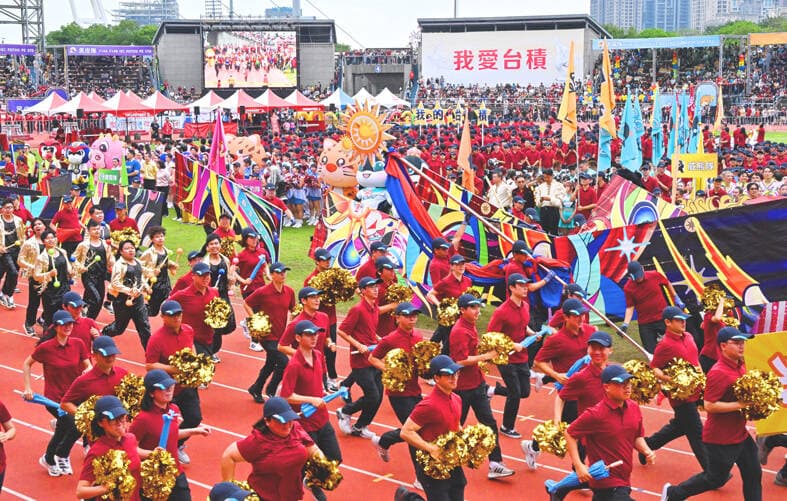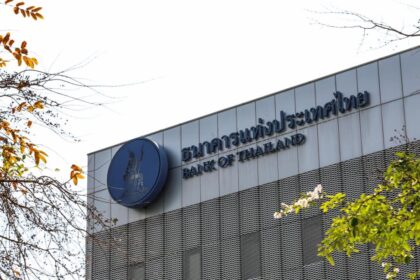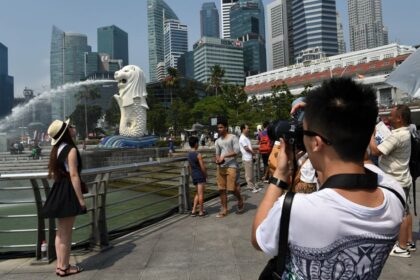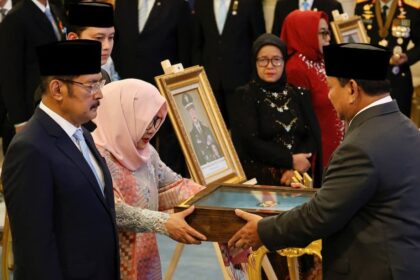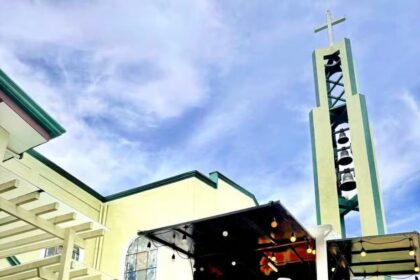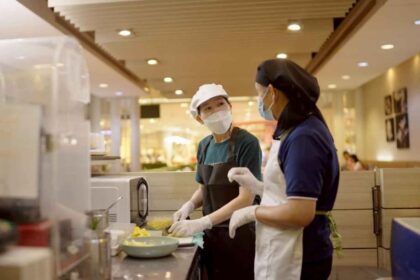A bigger thank you after a banner year
Taiwan Semiconductor Manufacturing Company will pay every employee NT$25,000, about US$806, as a Sports Day bonus this year. The announcement came at the companys annual Sports Day at Hsinchu County Stadium, a gathering that blends athletic contests with a showcase of team pride. Chairman and chief executive C. C. Wei thanked the workforce and described the payment as a gesture of appreciation for a year of strong results. For the first time, the perk extends to TSMC staff outside Taiwan, including teams in the United States, Japan, and Germany. With a global headcount of roughly 75,000, the one time payout will total about NT$1.875 billion.
- A bigger thank you after a banner year
- Who gets the payment and how it compares to past years
- A tradition that rallies the company
- AI demand, advanced nodes, and a rich order book
- Global expansion and geopolitics shape the workforce
- Why this bonus matters beyond the headline
- What to watch in 2025
- Key Points
TSMCs decision follows a run of record results. Over the first nine months of the year, the foundry reported net profit of NT$1.21 trillion, up 51.8 percent from a year earlier, while consolidated sales rose 36.4 percent to NT$2.76 trillion. Demand for advanced process technology used in artificial intelligence and high performance computing has filled factories and pushed average selling prices higher. Industry researcher TrendForce pegs TSMCs global pure play foundry share at 70.2 percent in the second quarter, the highest level ever recorded in that survey. Management now expects sales in 2025 to grow by nearly 35 percent in United States dollar terms.
Wei also used the event to thank families, saying the support of spouses, partners, and parents helps employees sustain the pace required by leading edge manufacturing. Sports Day has long been the moment when leaders deliver personal thanks to the people behind TSMCs output, and the company frames the bonus as a small gift for shared success.
Who gets the payment and how it compares to past years
This years award applies to all employees, not only those in non managerial roles. It covers staff at fabs and offices across Taiwan as well as key overseas sites now central to company strategy. That includes the United States operations in Arizona, the Japan joint venture in Kumamoto, and the new European facility in Dresden. The broadened scope matches the way TSMC now runs production and development across regions to serve customers and qualify for government incentives.
Sports Day bonuses have grown as the company has scaled. The company paid NT$16,000 per employee in 2023 when the festival returned after the pandemic pause. In 2024, the payment rose to NT$20,000. This year brings another increase to NT$25,000 and expands eligibility across the globe. During 2020 through 2022, when Sports Day was canceled for health reasons, TSMC still issued special payments to maintain the tradition.
Annual bonuses dwarf the Sports Day perk
Sports Day cash is just one piece of compensation. TSMC pays quarterly and annual performance bonuses that are tied to results. In 2025, the company approved record employee bonuses and profit sharing of about NT$140.6 billion for the prior year. With around 70,000 employees in Taiwan at the end of last year, the average annual payout there works out to roughly NT$2 million per person. Individual amounts differ by job, seniority, and team performance.
A tradition that rallies the company
Sports Day started in 1993 and grew into a signature cultural event. Teams march in, compete in relays and skill contests, and trade cheers across a day that blends pep rally energy with a family picnic. Organizers view it as a reset before the year end rush. It also gives new hires a sense of the companys identity and expectations.
After a three year break during the peak of COVID 19, the festival returned in 2023 and has regained momentum. Senior leaders often use the occasion to call for unity and to underscore milestones. The 2024 gathering featured founder Morris Chang, then 93, who applauded progress on two nanometer technology, the A16 process that follows it, and the first wave of overseas fabs coming online.
Mark Liu, then chairman, captured the tone at the 2023 event with a message about humility and resilience that has since become a rallying motto.
No arrogance in victory, no despair in defeat.
AI demand, advanced nodes, and a rich order book
A short primer helps explain why TSMC is distributing more cash. The company builds chips for leading designers that need cutting edge transistors tightly packed to hit speed and energy targets. The smaller the nanometer number, the denser the chip. These nodes are hard to manufacture, require years of research, and demand capital intensive equipment. Orders for AI accelerators and cloud processors swell demand for these nodes, since training and running AI models depend on large numbers of advanced chips.
Chairman C. C. Wei has said the two nanometer platform is on track for mass production in 2025, with an enhanced A16 generation due in the second half of 2026. Apple, Nvidia, and other top customers are already working with TSMC to reserve capacity as they plan new phones, data centers, and personal computers. That pipeline keeps factories full and gives management confidence to budget richer employee rewards.
Strong demand has lifted market share. Analysts estimate TSMC held 70.2 percent of the global pure play foundry market in the second quarter, a new peak in that measure. The company has also attracted long term orders for advanced packaging and back end steps that squeeze more performance from each chip, which spreads fixed costs across more high value work.
Global expansion and geopolitics shape the workforce
TSMCs growing overseas headcount is tied to both customer pull and public policy. In Japan, the Kumamoto project, operated through Japan Advanced Semiconductor Manufacturing, has started production. In Germany, the European Semiconductor Manufacturing Company project in Dresden has broken ground. In the United States, the company is building out a campus of fabs in Arizona backed by federal support under the 2022 CHIPS and Science Act, which includes grants of about US$6.6 billion and up to US$5 billion in loans. Host governments want local supply of advanced semiconductors. Customers value regional options and risk diversification.
Geopolitics also shapes operations. The United States has tightened rules on how leading edge chips and tools reach China, aiming to restrict the development of advanced systems with military uses. TSMC complies with these controls while it keeps serving multinational customers across many markets. The company has said it adds overseas capacity based on clear customer demand and adequate government support.
Corporate decisions mirror these pressures. Early this year, TSMC held a board meeting in the United States. It did not unveil fresh US projects at that session, yet directors approved a record employee bonus plan for the prior year and a cash dividend. The board also set capital appropriations of about US$17.14 billion for long term capacity plans and authorized a US$10 billion capital injection to TSMC Global to lower foreign exchange hedging costs. These steps reinforce the balance sheet as the firm ramps new technologies and sites.
Why this bonus matters beyond the headline
Recognizing every employee, regardless of location, sends a signal about culture. Engineering teams in Arizona, Kumamoto, and Dresden are still integrating with Taiwan based operations. A unified award can strengthen a shared identity and reduce any sense of distance between sites. It also highlights that the company sees its performance as the product of one workforce, from cleanroom technicians and equipment engineers to design service teams and logistics.
The timing matters as managers compete for skilled labor. Skilled operators, software engineers, and process experts are in high demand across the sector. A well timed, company wide payment adds to the appeal of roles that already feature profit sharing and a stable dividend policy for shareholders. It aligns staff around targets heading into a crucial year that includes the two nanometer ramp and major customer launches.
What to watch in 2025
Investors and employees will watch the pace of two nanometer production and how quickly A16 development advances. Demand visibility for AI accelerators, server platforms, and premium smartphones will shape utilization and margins. The company has flagged sales growth of nearly 35 percent in 2025 in United States dollar terms if current conditions hold.
Progress at overseas sites will also draw attention. The Kumamoto and Dresden projects will influence how the company spreads leading technology and operations discipline across regions. In the United States, the scale up in Arizona and the fine tuning of local supply chains remain a marker of how well the firm can duplicate its high yield model outside Taiwan.
Key Points
- Every TSMC employee worldwide will receive a NT$25,000 Sports Day bonus for 2025.
- The payment covers staff in Taiwan and at overseas sites in the United States, Japan, and Germany.
- Total payout is about NT$1.875 billion across roughly 75,000 employees.
- Sports Day awards rose from NT$16,000 in 2023 to NT$20,000 in 2024 and NT$25,000 this year.
- Sports Day was canceled from 2020 to 2022 during the pandemic, yet special payments still went out.
- Through the first nine months of the year, net profit reached NT$1.21 trillion, up 51.8 percent, and sales hit NT$2.76 trillion, up 36.4 percent.
- TSMCs foundry share climbed to a record 70.2 percent in the second quarter, according to industry estimates.
- Management projects sales growth near 35 percent in 2025 in United States dollar terms.
- The two nanometer node is slated for mass production in 2025, with A16 planned for the second half of 2026.
- Beyond Sports Day, 2025 board approvals for prior year compensation include about NT$140.6 billion in employee bonuses and profit sharing.
- TSMC is expanding in Japan, Germany, and the United States with support such as CHIPS Act grants and loans.
- The board set about US$17.14 billion for long term capacity projects and approved a US$10 billion capital injection to reduce hedging costs.


